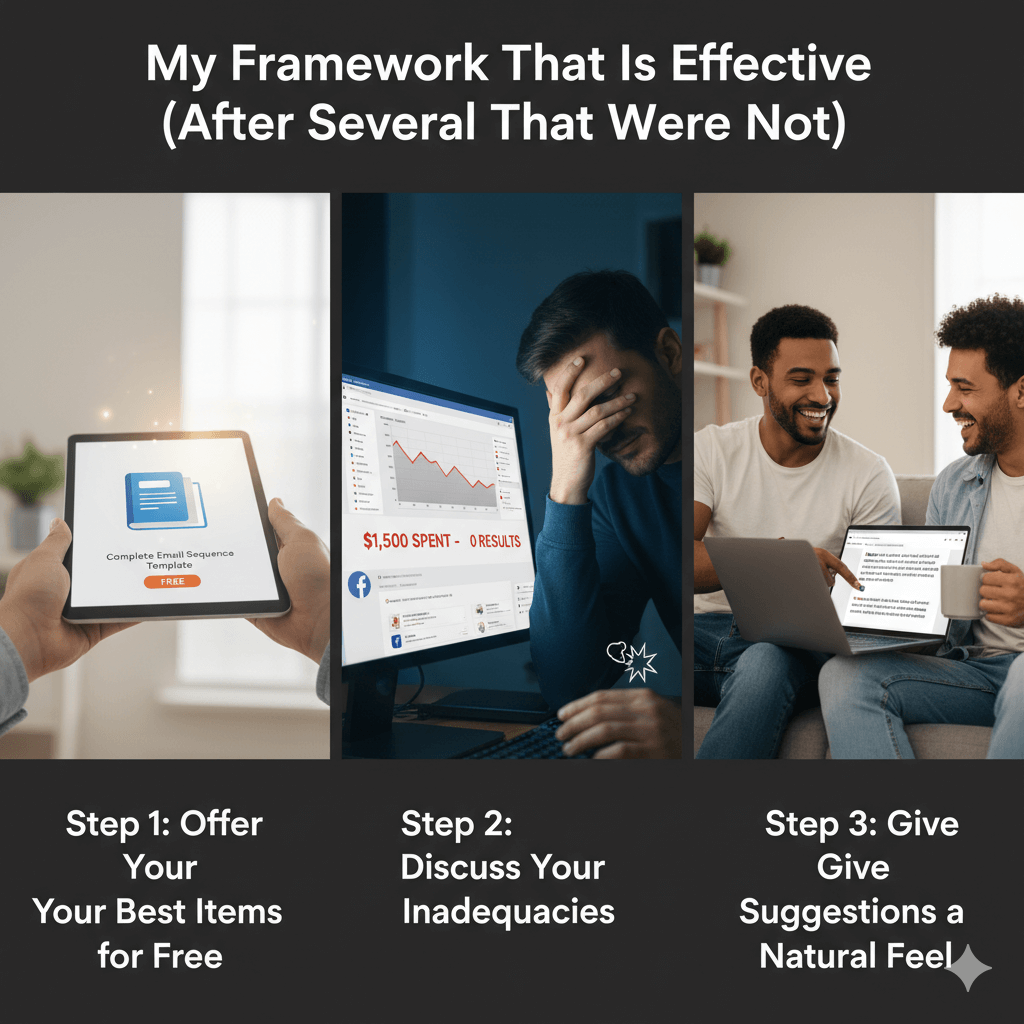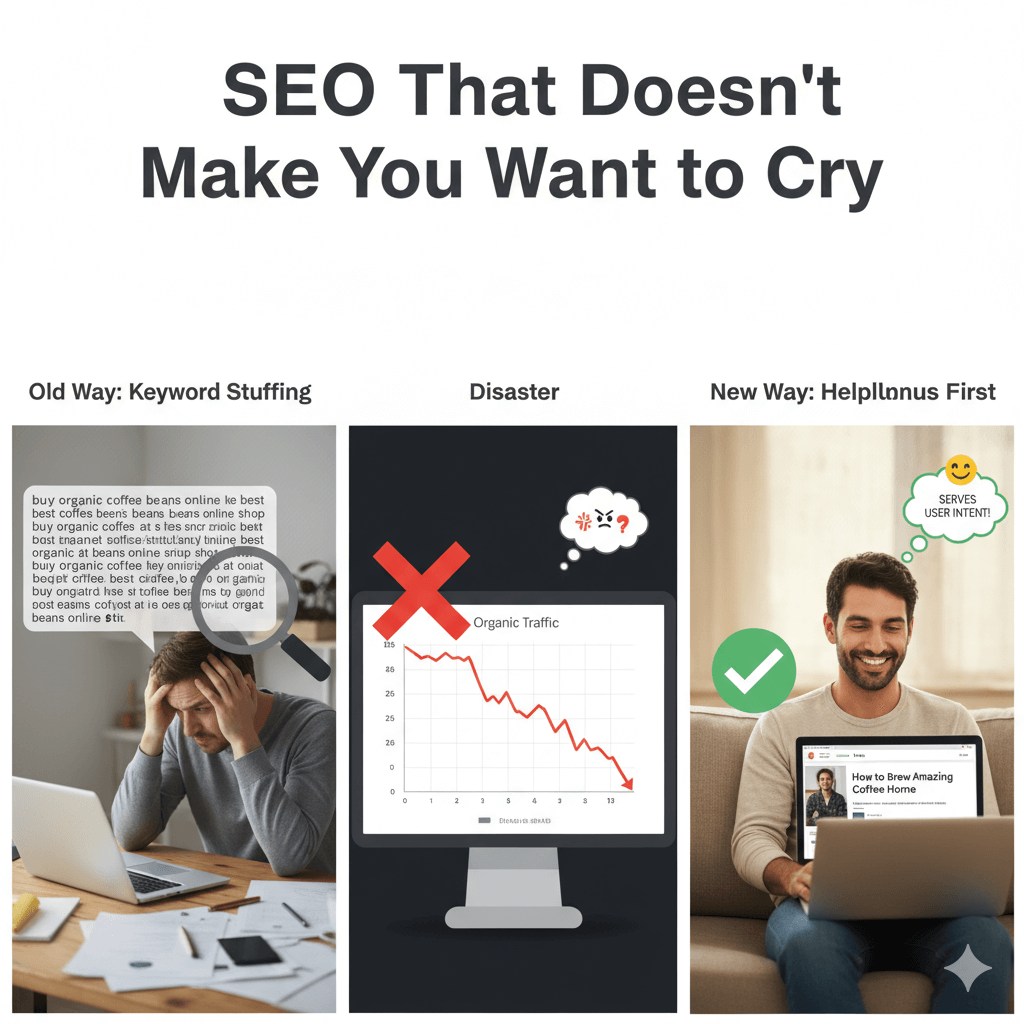I’m going to be honest with you. The majority of content on the internet seems to have been written by someone who has never had a real conversation with someone. Everything is so flawless and… phony.
I wrote content for three years that no one cared about. My blog entries resemble how-to guides. My social media posts sounded like a press release from a company. What about my email list? Let’s just assume that my mother accounted for about 30% of my subscribers.
Then it clicked. A man who sold marketing courses was discussing how he blew a conference presentation in this newsletter I was reading. It really bombed. He told the entire embarrassing story, including what went wrong and how it made him want to hide under a rock.
“Finally, someone who sounds like an actual human being,” I thought.
I became aware of my mistakes at that point. I neglected to sound like a person because I was so focused on sounding like an expert.
What Authority Really Means (And Why Most People Get It Wrong)
Here’s the thing about authority that nobody talks about: it’s not about being perfect. It’s about being useful.
I used to think authority meant having all the answers. So I’d write these comprehensive guides that covered everything but helped with nothing. They were like those awful “how to build a rocket ship” tutorials that start with “first, obtain some rocket fuel.”
Real authority is different. It’s when someone reads your stuff and thinks, “Oh, this person has actually done this before. They know what they’re talking about because they’ve screwed it up a few times.”
My most successful blog post ever was about a product launch that completely failed. I lost $2,000 and learned about 50 lessons the hard way. That post got more engagement than anything I’d written before because people could tell I wasn’t just making stuff up.
When you share real experience – including the messy parts – people trust you. And when people trust you, they actually listen to your recommendations instead of immediately hitting the back button.
Also read: What I Learned Posting 30 Reels in 30 Days
Why People Want to Punch Their Screen at Salesy Content

You understand what I mean. Those articles are essentially advertisements masquerading as informative articles.Usually, they begin with an absurd assertion such as “I used this one strange trick to make $50,000 last month!”
Those things are no longer believed. All of us have experienced too many burns.
When people read that nonsense, the following is what truly occurs in their minds:
“This amazing tool will revolutionize your business!” is the salesy version. “Yeah right, what are you selling?” goes through the reader’s mind.
Authority version: “I’ve been using this tool for a year or so. If you’re dealing with Z, it’s worth the money, but it’s awful for Y. “Okay, this person seems to know what they’re talking about,” goes through the reader’s mind.
Can you see the difference? The first one promises things. Experience is shared in the second one.
I erred for far too long. In essence, each blog post was a sales letter with a few tips included. People could smell the sales pitch from a mile away, which is why my bounce rate was so high.
My Framework That Is Effective (After Several That Were Not)

Okay, so I finally came up with a strategy that doesn’t make people want to fling their phones across the room after failing miserably for a few years.
Step 1: Offer Your Best Items for Free It may seem counterintuitive, but this is effective. I once published a blog post with my complete email sequence template. I intended to sell that one for $97. More people subscribed to that post than to six months of lead magnets.
Why? because I wasn’t holding back, and people knew it. Imagine what the paid items must be like if I were giving away something this valuable for free.
Step 2: Discuss Your Inadequacies Perfect success stories don’t resonate with anyone. They relate to hardship. A Facebook ad campaign that spent $1,500 in three days with no results was the subject of my most popular post. I talked about how frustrated I was, shared screenshots, and explained my errors.
Because it was authentic, people were enthralled.
Step 3: Give Suggestions a Natural Feel You’ve demonstrated your expertise by the time you bring up a product or service. Instead of feeling like a sales pitch from an unfamiliar person, your suggestions seem like counsel from a friend.
The strange thing is that more people buy when I don’t try to sell. My affiliate revenue doubled when I stopped promoting products and instead focused on being helpful.
SEO That Doesn’t Make You Want to Cry

Most SEO advice is written by people who clearly don’t understand how Google actually works. They’re still talking about keyword density like it’s 2005.
Here’s what I learned after watching my keyword-stuffed articles get buried while my “SEO disasters” ranked #1: Google cares about one thing above all else – does this actually help the person who searched for it?
My approach now is embarrassingly simple. I write for my friend Dave. He’s smart but not technical, busy but curious, and he asks really good questions. If Dave would find my article helpful, Google probably will too.
I stopped worrying about putting keywords in exactly the right places and started worrying about whether my content actually answered the question someone was asking. My organic traffic went from about 500 visitors a month to over 15,000.
The technical stuff matters, but not as much as the “does this actually help someone” stuff.
Tools That Actually Help (Instead of Just Looking Cool)
I’ve probably spent $5,000 on content tools over the years. Most of them had beautiful dashboards that made me feel productive while accomplishing absolutely nothing.
Here are the ones that actually moved the needle:
SurferSEO – Shows me what comprehensive coverage looks like without the guesswork. Worth every penny.
Grammarly – Catches when I’m being unclear or using too much jargon. My writing got way better after I started using this.
Frase.io – Reveals what questions people actually ask about topics. Super helpful for planning content.
Jasper – Great for kicking off rough drafts when you’re staring at a blank screen. I don’t rely on it to write for me, but it’s helpful for generating angles, headlines, or reworking something I’m stuck on.
The key insight I learned: tools don’t create good content, people do. These just help you research better and communicate clearer.
I track my content performance probably more than I should. Here’s what the data shows:
When I write sales-focused content: 73% bounce rate, 52 seconds on page, 0.4% conversion rate.
When I write authority-focused content: 41% bounce rate, 2 minutes 18 seconds on page, 1.9% conversion rate.
The numbers don’t lie. People stick around longer and take action more often when you focus on helping first.
What I Wish Someone Had Told Me When I Started
My biggest mistake was trying to copy successful people in my industry. I thought authority meant sounding like them. So I used their language, their format, their style.
It was a disaster. I sounded like a cheap imitation instead of an authentic voice.
The breakthrough came when I started writing like I talk. Casual, conversational, with the occasional tangent or random thought. Suddenly people started responding to my content like it was from a real person, not a content machine.
Different industries have different expectations, though. If you’re writing for lawyers, you probably can’t be as casual as if you’re writing for small business owners. But within those constraints, be yourself.
Also, the compound effect is real but slow. Your 50th piece of content will have way more impact than your first, not just because you’re better at writing, but because you’ve built a reputation. People start recognizing your name and trusting your expertise.
Myths That Keep People Stuck in Mediocrity
“Nobody reads long content anymore” – This is complete nonsense. Nobody reads boring content anymore. My longest post (over 3,000 words) gets more engagement than my short ones.
“I need impressive credentials to have authority” – Wrong. Some of the most trusted voices in my industry never went to college. Helpful content builds authority faster than degrees.
“Authority means never admitting mistakes” – Actually, the opposite. My post about a failed product launch got more shares than any of my success stories.
For Digital Marketing Consultancy, book 1:1 session with me or email me at hello@shehnoorahmed.com

FAQs
How long does it take to build authority?
In my experience, about 6 months of consistent publishing. But it depends on your niche and how often you publish. I published twice a week for the first year.
What if I don’t have much experience yet?
Start where you are. Share what you’re learning as you learn it. Some of my best content comes from documenting my own learning process. People love following along on the journey.
Can I still make money with this approach?
Absolutely. I make more money now than when I was writing pushy sales content. The difference is that people trust my recommendations because I’ve proven I know what I’m talking about.
What’s the biggest mistake new content creators make?
They try to be everything to everyone. I spent six months writing about “business growth” when I should have focused on “email marketing for consultants.” Specificity beats generality every time.
Does this work for all industries?
The principles work everywhere, but you need to adapt to your audience. B2B audiences want different things than B2C audiences. Technical audiences want different things than lifestyle audiences.




